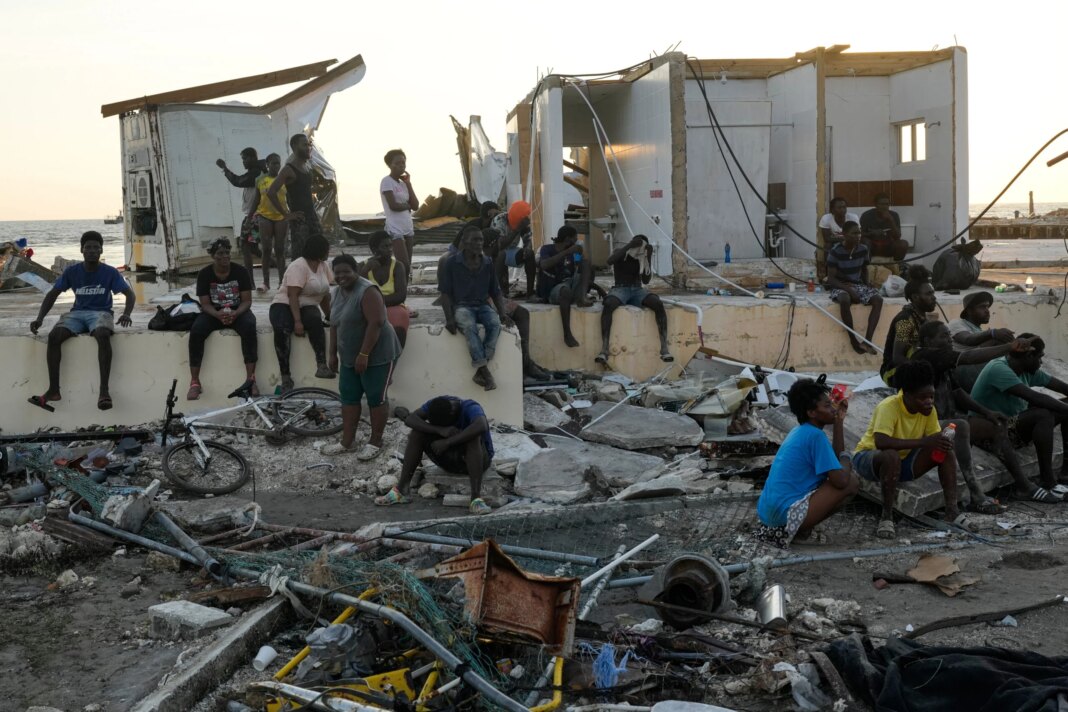The Impact of Hurricane Melissa on Jamaica and Beyond
San Juan, Puerto Rico – In the wake of Hurricane Melissa, Jamaica has been grappling with the devastating aftermath of one of the strongest Atlantic hurricanes on record. The confirmed death toll in Jamaica has tragically risen to 45, with 15 individuals still missing. As rescue efforts continue, authorities are confronting the harsh reality of a catastrophe that has left entire communities isolated and in need of urgent assistance.
Ongoing Rescue Efforts
Since the Category 5 storm made landfall in western Jamaica on October 28, officials are working tirelessly to reach two towns that are still cut off from communication and aid. Helicopters have been deployed to drop essential supplies, such as food and clean water, to the affected residents in these remote areas. Alvin Gayle, director general of Jamaica’s emergency management office, has emphasized the urgency of reaching these communities amidst rising water levels and blocked roadways.
Displacement and Shelter Concerns
Hurricane Melissa has displaced approximately 30,000 households across Jamaica. Currently, 1,100 people are seeking refuge in 88 emergency shelters that remain operational. The situation in these shelters is critical, with the United Nations deputy spokesperson, Farhan Haq, highlighting that shelter remains a significant concern due to damage to infrastructure. An alarming 40,000 tarpaulins, essential for providing temporary shelter, are currently unable to be delivered due to the state of the roads.
Restoration of Vital Services
As recovery efforts progress, there have been signs of hope amid the devastation. Nearly 50% of mobile customers have regained service, while over 70% of residents now have access to water. Furthermore, significant progress has been made in restoring power, with more than 60% of customers receiving electricity again. Hugh Grant, president and CEO of Jamaica’s power company, expressed relief that power has been restored to key locations, including the international airport in Montego Bay, marking a significant milestone amidst the chaos.
The Broader Impact on the Region
Hurricane Melissa’s catastrophic effects extended beyond Jamaica, impacting neighboring countries like Cuba and Haiti. In Cuba, more than 54,000 individuals have been unable to return home, with 7,500 people in official shelters. The storm wreaked havoc on over 90,000 homes and increased the number of affected health facilities from 460 to more than 600. As recovery efforts ramp up, aid organizations are working round the clock to assist those in need.
Flooding and Humanitarian Relief in Haiti
The storm has also inflicted heavy flooding in southwestern Haiti, leading to at least 43 confirmed deaths. The town of Petit Goâve emerged as one of the hardest-hit areas, prompting the United Nations’ World Food Program to distribute food supplies to over 40,000 residents. The humanitarian crisis in the region is escalating as communities strive to recover from the damages inflicted by Hurricane Melissa.
International Aid and Recovery Efforts
In response to the widespread devastation, the U.S. government has announced an additional $10 million in funding for Jamaica and $2.5 million for Haiti. This support adds to nearly $37 million allocated to assist the nations affected by the storm, including Cuba and the Bahamas. As aid continues to pour into the affected regions, communities are united in their efforts to rebuild and recover from the catastrophic effects of Hurricane Melissa.
The Road Ahead
As recovery efforts evolve, the resilience of the affected communities is paramount. Though the death toll continues to rise and challenges persist, the spirit of solidarity and support from both local and international organizations shines through the pervasive gloom left by Hurricane Melissa. The need for comprehensive recovery strategies remains critical as officials work to restore normalcy in the region.



